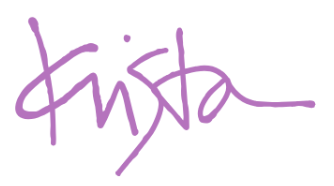"Life is all a work of art. Sometimes the creative process takes place with people and organizations, sometimes it is expressed in wOrds, sometimes pictures, sometimes projects. If you look closer, art and inspiration are Everywhere.”
Once upon a time, there was a little girl who painted pictures all day long, making believe that the kitchen chairs were easels.
She took her first real art class in college and won an art scholarship. But her family didn’t want her to be an artist, and wanted her to have a real job, so she worked in business for many years, making her pictures privately. Some people say the reason why she was successful in business is because she saw things differently, as an artist, drawing unusual connections between people and ideas.
A few years ago, some friends saw her pictures and they convinced her to show her work publicly, and when she said “Yes,” her world turned happily upside down. Or maybe it was finally right side up again.
Krista Bard was raised in a Lithuanian convent because her mother was ill. She had three mentors there: Sister Ona in art, Sister Marija in poetry, and Sister Teresa in psychology and comparative religion. In college, her finest written work was a thesis for Professor Michael Fixlerʼs “Religion of Art” course, where she developed a universal hierarchy for symbols proving it through mythologic anthropomorphism. Her early art reflects traditional representational studies as well as graphic design. Her favorite pictures of that time are “Knielauf Medusa” inspired by the Temple of Artemis at Corfu, and a six-foot watermelon commissioned by New Yorkʼs JG Melon.
Bard worked for the federal government, for profit corporations and non-profits before starting her own consulting firm. She served as president of the small business association, chronicling her experiences and philosophy in the book, “The Big Difference: A Study of Small, Significant Things That Bring About Change, and Inspire People, Cities and the World.” During that time, the Perry Milou Gallery on Philadelphiaʼs Rittenhouse Square held a one-woman exhibition of Bardʼs “Sacred Love” series, a mixed media collection of new calligraphy-like symbols for the ancient Kama Sutra, Ananga Ranga and Tantric manuscripts.
Through her studies in energetic psychology with Dr. Kurt Ebert, Bard learned about several frontier scientists: Masaru Emotoʼs “Messages from Water” research evidencing the power of words on water and, by extension on the human body; Don Campbellʼs “Mozart Effect” study of the effects of music; David Hawkinsʼ “Power vs. Force” matrix for levels of consciousness; and Rupert Sheldrakeʼs “Morphic Resonance” treatise on the collective unconscious governing formative causation.
At a time of great personal sadness, Bard found solace and inspiration in this combination of art, music and ideas.
“What would happen if I combined what I learned from all these great minds? What if I treated the paper with sacred oils and waters? What if I played sacred music while I meditated and made the pictures? What if I chose words that all resonated with joy? Could this shift my own consciousness, and could it shift someone elseʼs?”
With these questions, “Sacred Words” was born.
All the words in the “Sacred Words” series are ink and oil pastels on paper that has been treated with essential oils and waters collected from all around the world.


